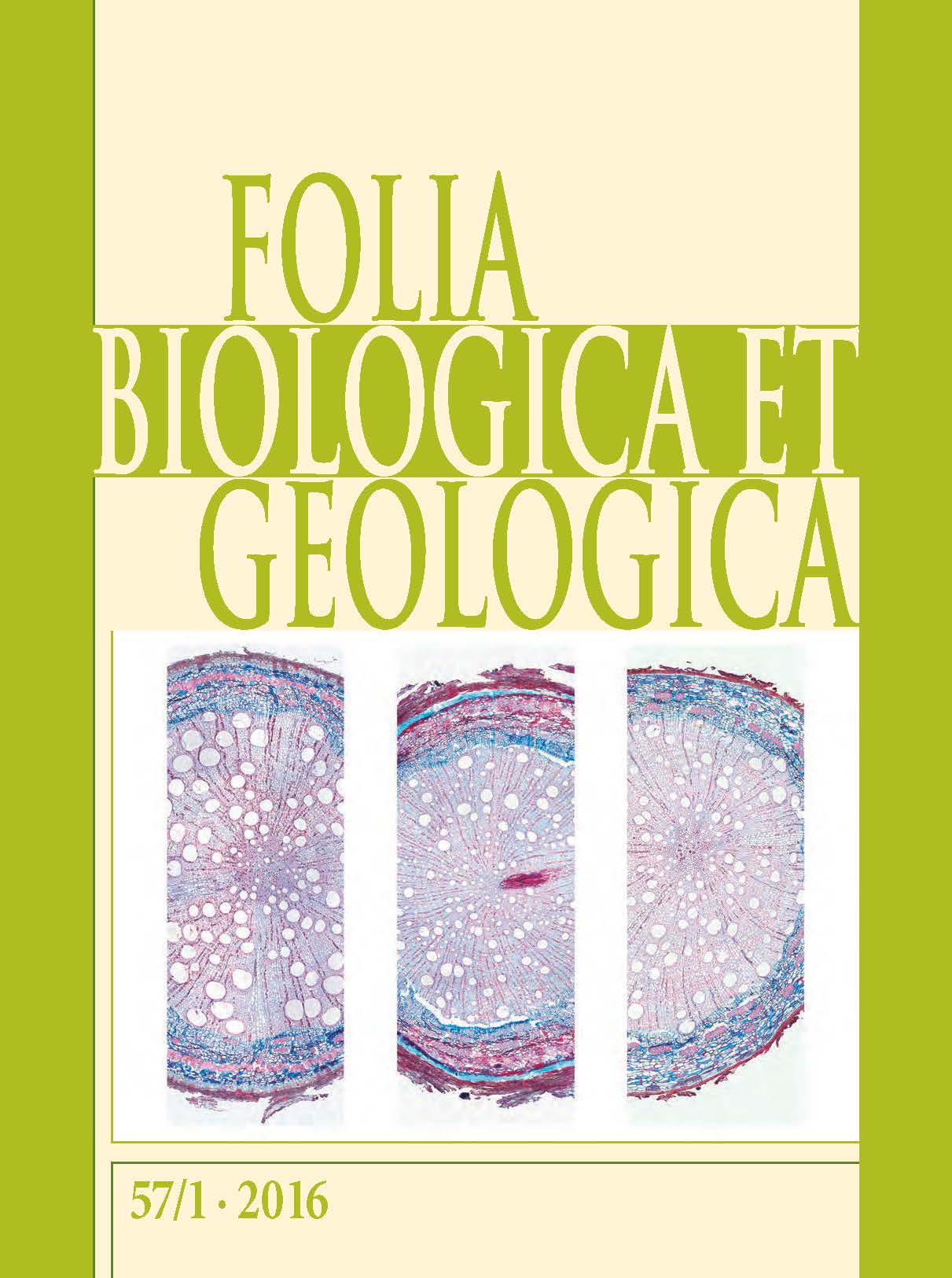Anatomski pristop k identifikaciji korenin pravega kostanja (Castanea sativa Mill.) in gradna (Quercus petraea (Matt.) Liebl.) / Anatomical approach to identification of roots of sweet chestnut (Castanea sativa Mill.) and sessile oak (Quercus ...
DOI:
https://doi.org/10.3986/fbg0002Abstract
Ločevanje korenin po vrstah v mešanih sestojih nam omogoča, da razjasnimo vlogo, ki jo igra posamezna vrsta pri procesih v tleh. Najhitrejše in najcenejše metode za določevanje korenin so morfološke in anatomske, pri čemer pa mora biti morfološka določitev vsaj na začetku podprta z anatomsko preverbo. V članku opisujemo anatomske lastnosti korenin (< 5 mm v premeru) pravega kostanja in gradna, ki se v gozdnih združbah pogosto pojavljata skupaj. Velik del anatomskih znakov v lesu korenin se prekriva, najverjetneje zaradi dokaj ozke filogenetske sorodnosti rodov Castanea in Quercus. V nekaterih primerih so imele korenine gradna v lesu prisotna širša območja brez trahej, ki jih pri pravem kostanju nismo zasledili. Širina trakov, ki je pomemben ločevalni znak v lesu debla, v koreninah obravnavanih vrst ni bila uporabna, saj široki trakovi, ki jih najdemo v lesu debla pri hrastih, v koreninah še niso bili razviti. V koreninah pravega kostanja pa smo zasledili poleg enorednih tudi deloma dvo- in tro-redne trakove, za razliko od strogo enorednih v lesu debla. Glede na skorjo lahko korenine ločimo med sabo po pojavljanju sklereid, ki so bile v koreninah gradna prisotne že v koreninah, debelih samo 1 mm, v koreninah pravega kostanja pa jih nismo zasledili. Prizmatski kristali, ki obdajajo sklerenhim v skorji, so bili pri gradnu za razliko od pravega kostanja neenakomernih velikosti.
Ključne besede: korenine lesnatih rastlin, anatomija rastlin, identifikacija, Fagaceae, mešani gozdovi, graden, pravi kostanj
To enable analysis of role that is played by each plant species in belowground processes, roots must be identified among species. Morphological and anatomical methods enable fast and cheap identification of plant roots, but morphological determination should be supported by the anatomical one, at least at the beginning. The contribution describes anatomical features of sweet chestnut‘s and sessile oak‘s roots (< 5mm in diameter), that are commonly occurring together in forest communities. The majority of anatomical features are shared between both species, probably due to relatively close phylogenetic relationship of genera Castanea and Quercus. In some cases, wide areas devoted of vessels can be observed in roots of sessile oak that are not encountered in sweet chestnut. Width of rays, an important identification character in stem wood, was not found useful for identification of roots of the selected species. In roots of sessile oak, wide rays that are observed in stem wood were not developed yet. In roots of sweet chestnut, partially two- to three-cells wide rays were present, while exclusively one cell wide rays are characteristic of stem wood. In bark, roots can be identified based on occurrence of sclereids: in roots of sessile oak, sclereids were present already in roots of 1 mm in diameter, while they were absent from bark of sweet chestnut. Unequally sized prismatic crystals, that surround the sclerenchyma in bark, were characteristic of sessile oak, while they were more or less of the same size in sweet chestnut.
Keywords: woody plant roots, plant anatomy, identification, Fagaceae, mixed forests, sessile oak, sweet chestnut




